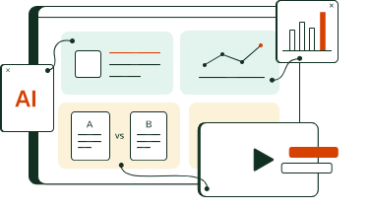As the January 1, 2021 deadline for Brexit negotiations rapidly approaches, it is still unclear whether the United Kingdom and the European Union will reach a trade agreement or go their separate ways under World Trade Organization rules. Regardless of the eventual trade arrangement that materializes between the UK and EU in 2021, multinationals will face the herculean task of understanding and responding to a flurry of new border protocols, trade regulations, and supply chain uncertainties.
Are multinational trade compliance managers prepared? Many are not.
In a recent Thomson Reuters webinar, “Practical Steps to Embrace Technology for Last-Minute Brexit Readiness,” almost half of the attendees reported that their companies did not have a formal process for dealing with new Brexit-related tariffs, and 42% of global trade professionals said they did not use any form of global trade management (GTM) software to help automate their increasingly complex workload.
In fact, despite the mounting demand for documentation and data of all kinds—e.g., product tracking, proof of origin, customs declarations, inventory management, tariff calculations, and more—many multinationals still manage their supply chains using the same spreadsheets and manual procedures they developed decades ago.
A global trade professional’s guide to post-Brexit trade strategies
For trade compliance managers, this obvious mismatch of tools for the task ahead will become glaringly apparent when the implications of Brexit are fully felt. To help ease the transition, Thomson Reuters has published a downloadable special report on post-Brexit GTM strategies called “Brexit’s Impact on Global Trade and How Technology Can Help Multinationals Prepare.”
The report offers a concise analysis of the likely challenges trade compliance managers will face in 2021 as a result of Brexit and includes a complete breakdown of the many ways in which GTM software can help ensure compliance, mitigate risk, prevent costly mistakes, and meet the increasing global demand for trade documentation and accountability. The report also discusses in detail how GTM software can be used to anticipate and prevent potential supply chain disruptions, including how data analytics can be used to provide both business intelligence and operational transparency.
Leveraging global trade management software in the great supply chain shuffle
Thomson Reuters understands that trade compliance and supply chain professionals work in a fluid, stressful environment where even seemingly small disruptions can have enormous consequences. In the UK, for example, Honda was recently forced to close an auto-manufacturing plant because critical parts were held up by port delays due to the ongoing pandemic. After January 1, 2021, such hold-ups are expected to create shortages for thousands of goods, especially if a UK-EU trade deal cannot be reached. Indeed, almost every company with a supply chain that runs through the UK and/or EU will be impacted, and the competition for suddenly scarce resources and commodities could be intense.
The losers in this great supply chain shuffle will be companies that have not sufficiently prepared for the challenges and difficulties ahead. GTM software is one of the few tools that gives trade compliance and supply chain managers a competitive advantage because it automates many of the most critical and time-consuming aspects of the job, freeing up time for deeper analysis of key data and ensuring that crucial records are tracked, organized, and securely stored. Trade compliance teams that use GTM software can also be confident that no details have been overlooked and that all documentation is properly executed, up-to-date, and audit-ready.
Global trade uncertainties impacting the supply chain
Brexit isn’t the only geopolitical crisis that threatens the stability of global supply chains. Climate change, the ongoing pandemic, trade conflicts between the U.S and China, new trade deals between the UK and other countries, geopolitical instability in Africa, Asia, and the Middle East — all these factors and more contribute to the atmosphere of uncertainty that threatens today’s globally connected supply chains.
Additionally, there are 375 free trade agreements worldwide, each with its own rules and regulations. Monitoring them all is next to impossible without the aid of GTM software that automatically tracks regulatory changes in countries and jurisdictions all over the world. And in today’s volatile trade environment, unfortunately, companies that don’t leverage GTM technology risk unexpected supply disruptions, cost overruns, delays, fines, and — ultimately — tarnishing of the brand.
Global trade management software can reduce common supply chain risks post-Brexit
Uncertainties surrounding the final stages of Brexit are the top concern for many multinationals. Regardless of the outcome, companies doing business in and between the UK and Europe will have to adapt to new import/export procedures and protocols. If an FTA cannot be negotiated, an entirely new regime of tax rates, product classifications, tariffs, controls, licensing, and authorizations will suddenly apply.
Companies that aren’t sufficiently prepared for Brexit-related disruptions may find themselves scrambling to comply with all of these new rules and regulations. But there is no need to panic. With the right technological tools, post-Brexit supply chains can be effectively and efficiently managed, and risks of all kinds can be minimized. Scenario modeling with GTM software can also help trade compliance professionals future-proof their supply chains by identifying alternative sourcing networks and building in layers of redundancy for must-have parts, raw materials, or supplies.
Download our free special report on post-Brexit strategies for global trade professionals
Our special report on “Brexit’s Impact on Global Trade and How Technology Can Help Multinationals Prepare” offers trade compliance and supply chain professionals a thorough overview of how GTM software can help reduce the pain and anxiety of Brexit. And for those who are considering adding GTM capabilities to their company’s toolkit, the report also provides a checklist of important considerations to help companies choose a system that meets their specific needs and budget.










